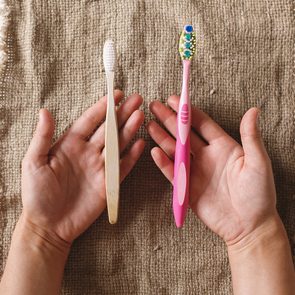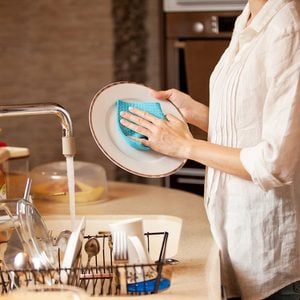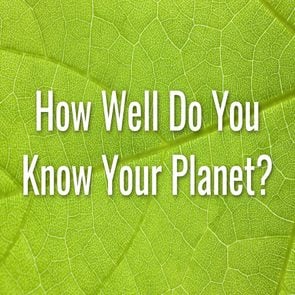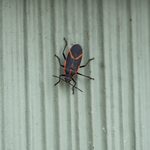How to Make Your Bathroom Cleaner—and Greener
A green cleaning expert shares how she created a faster, easier and less toxic sanitation routine for her bathroom in four easy steps.
Our editors and experts handpick every product we feature. We may earn a commission from your purchases.
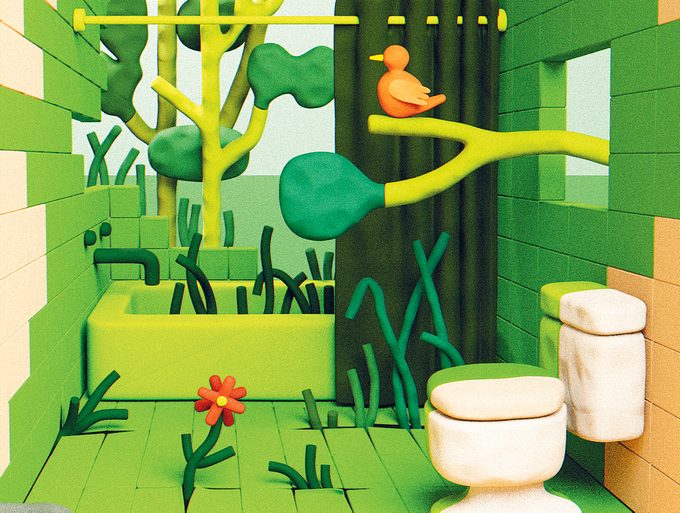
Green Cleaning is Better for You (and Your Bathroom)
Early in the 2010s, I began to realize that my bathroom was the most toxic place in my house. I read headline after headline warning consumers about the negative health effects of chemicals in beauty products. Documentaries such as Stink!, about the toxic chemicals found in everyday products, left me further alarmed. I had all kinds of unsafe chemicals in my cupboards. Maybe it shouldn’t have been that much of a surprise, especially when it came to the cleaning products. Many of them do have warning labels.
Now it makes me cringe to think that I spent years cleaning with harsh chemicals without wearing rubber gloves. I wasn’t protecting myself against the toxins that can penetrate the biggest organ we’ve got: our skin. Additionally, breathing in cleaning products’ fumes can be bad for our lungs. Toxic substances may irritate air passages, be absorbed by the lungs into the bloodstream, or lead to a decline in lung function with long-term use. I resolved to change my cleaning habits—immediately.
What I didn’t know back then was that my efforts were also laying the foundation for sustainable and low-waste living. It makes sense. Less stuff equals less waste. Fewer toxins equals healthier people and a healthier planet. And, the chemicals we use at home often find their way into the natural environment.
Fast-forward to today, and I’m seeking out bathroom products that are healthier (i.e., non-toxic), with a minimalist approach (i.e., fewer products, more functionality) and that are low waste (i.e., have less packaging). My transition took years, but there are many ways to speed up the process to a cleaner, greener bathroom.
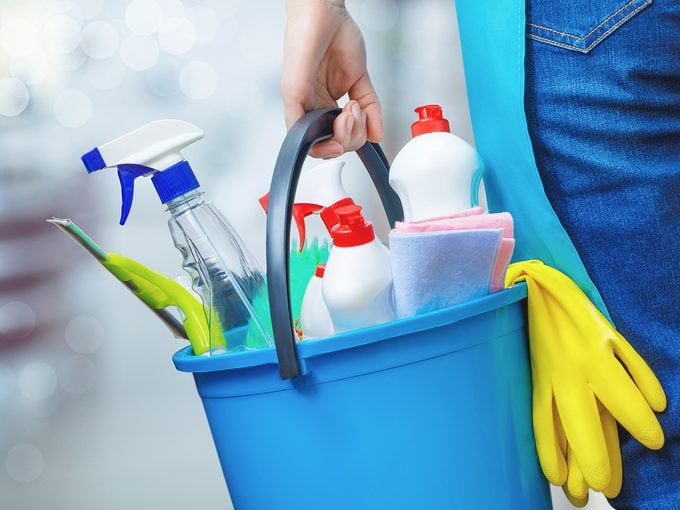
First, Check the Ingredients in Your Cleaning Products
The air inside our homes is two to five times more polluted than the air outside. This is due to things like building materials, home furnishings, air fresheners and cleaning products releasing harsh chemicals into the air, including ones linked to asthma, developmental harm and cancer. Here’s what to ditch:
- Cleaners that include ammonia or chlorine bleach because they are highly toxic, and when accidentally mixed, they create a dangerous chloramine gas.
- Anything containing hydrochloric acid, phosphoric acid, sodium or potassium hydroxide, or ethanolamines, because they can cause skin burns, blindness and lung irritation.
- Air fresheners and scented products that don’t disclose their fragrance ingredients, as these products may trigger allergies and could contain endocrine (hormone) disruptors.
- Triclosan, which is an antimicrobial that is linked to increased allergen sensitivity and may disrupt thyroid function.
- Quaternary ammonium compounds, which are chemicals associated with asthma, reduced fertility and birth defects in animals.
You’ll also want to look out for these dangerous ingredients in your beauty products.
Next, Detox Your Cleaning Supplies
Pull out all of your cleaning supplies. Then, using the EWG website’s database on household cleaning products, assess everything and discard anything that no longer meets your standards. You can give these away, donate unused products to organizations that accept them, and throw away anything that remains.
Then, Simplify Your Cleaning Routine
After going through the exercise above, assess what’s left. Ask yourself:
- Will I use everything here?
- Am I missing anything that I need?
While it’s freeing to declutter, it’s also less wasteful to use up what you already have at home.
Lastly, Choose Some Low-Waste Cleaning Options
Once you’re ready to fill in any gaps in your leftover cleaning supplies, consider the following low-waste options:
- Product refills: Product refills are great if you have access to zero- and low-waste shopping options. Take your own containers and fill up what you need in store. You can also do low-waste bulk refills at home with companies like The Bare Home and Common Good.
- Concentrated cleaners: Dr. Bronner’s castile soap is a highly concentrated cleaning solution that, when mixed with water, can be used to make various cleaning products: all-purpose cleaner, veggie and fruit wash, toilet bowl cleaner and body wash, among many other uses. Other low-waste, concentrated cleaning brands have concentrated tablets to reduce plastic waste at home, or you can try Tru Earth laundry strips.
- Solid bars: Similar to concentrated cleaners, solid bars reduce waste by eliminating single-use plastic. No Tox Life carries the Dish Block, which is a concentrated cleaning bar that’s great for washing dishes as well as cleaning other areas of your home.
- Make yourself: My all-time favourite, easy-to-make all-purpose cleaner is simple! All you need is a spray bottle, water, vinegar and (optional) essential oil. Here’s the breakdown:
- 1 part vinegar to 2 parts water
- 10-20 drops of your favourite essential oil per 3 cups (I like to use a citrus mix)
- This all-purpose cleaner is safe for most surfaces, but you should avoid using it on granite, marble and soapstone countertops, as well as solid-wood furniture. Vinegar is a great disinfectant, with many antibacterial properties; that said, it does not kill viruses like COVID-19.
- Cleaning accessories: Skip the paper towel and use a reusable rag or cloth for cleaning. Or opt for a Ten and Co. Swedish sponge cloth, which can hold up to ¾ cup of water, can last up to a year, is easily cleaned in the dishwasher or washing machine, and can be composted at the end of its life.
Tara McKenna is the founder of The Zero Waste Collective and author of Don’t Be Trashy: A Practical Guide to Living with Less Waste and More Joy.
From the book DON’T BE TRASHY: A Practical Guide to Living with Less Waste and More Joy by Tara McKenna. Copyright ©2021 by Tara McKenna. Published in the United States by Rodale Books, an imprint of Random House, a division of Penguin Random House LLC.
Next, conduct a room-by-room sweep with our healthy home checklist.
